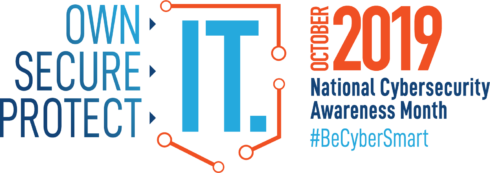
National Cybersecurity Awareness Month is observed every October as a way to raise awareness about the importance of cybersecurity, but despite the efforts to provide a safer and more secure Internet — problems still remain.
In 1998, a group of computer hackers went in front of the Senate to warn them about cyber security. The hackers claimed they could take down the Internet in 30 seconds through hijacking IP addresses. More than 20 years later, the problem still exists, according to MIT’s Computer Science and Artificial Intelligence Lab (CSAIL). IP-hijacking continues to plague the Internet through spam, malware and even Bitcoin theft.
RELATED CONTENT: Companies are making up for lack of cybersecurity professionals by investing in their developers
The MIT CSAIL researchers explained that current efforts to detect IP-hijacking often does after the fact, but the researchers think they can predict the incidents in advance. The MIT researchers in collaboration with researchers from the University of California at San Diego presented a new machine learning system that looks at common qualities of “serial hijackers” and can identify about 800 suspicious networks.
“Network operators normally have to handle such incidents reactively and on a case-by-case basis, making it easy for cybercriminals to continue to thrive,” said MIT graduate student and lead author Cecilia Testart. “This is a key first step in being able to shed light on serial hijackers’ behavior and proactively defend against their attacks.”
The machine learning model takes in data from years of network operator mailing lists, historical BGP data, and qualities of malicious actors. Some behaviors the system has been able to identify include volatile changes in activity, multiple address blocks, and IP addresses in multiple countries.
As the Internet becomes more significant in our everyday lives, the researchers expect IP hijacking will long get worse — but it can also get more difficult with new security measures like the machine learning model.
“This project could nicely complement the existing best solutions to prevent such abuse that include filtering, anti-spoofing, coordination via contact databases, and sharing routing policies so that other networks can validate it,” said David Plonka, a senior research scientist at Akamai Technologies. “It remains to be seen whether misbehaving networks will continue to be able to game their way to a good reputation. But this work is a great way to either validate or redirect the network operator community’s efforts to put an end to these present dangers.”
Other efforts to celebrate National Cybersecurity Month around the industry include:
Google’s tips for better protecting websites
According to Google, a lot of website owners are unaware of the threat their websites face. A common misconception is that you only need to encrypt the webpages that collect credit cards or log-in information, but Ben Fried, VP, CIO and chief domains enthusiast at Google wrote in a blog post “a single page that isn’t encrypted could potentially be used to gain access to the rest of the website.”
To help website owners better protect their entire website, Google is providing the following tips:
- Using top-level domains that are HTTP Strict Transport Security (HSTS) preloaded because is will tell “modern browsers which websites to only load over an encrypted connection.”
- Adding your website to the HSTS preload list yourself, however the company added that this can be a slow process.
“If you wanted to send a secret message by mail, would you rather send it in an envelope, or on a postcard? If you send it on a postcard, anyone who saw the postcard on its way to the recipient could read the message, or even make changes to what’s written,” Fried wrote. “Encryption on a website functions like an envelope, protecting information passed between your website and its visitors so it can’t be snooped on or changed. It’s what keeps your visitors safe from bad actors who may try to alter your site’s content, misdirect traffic, spy on open Wi-Fi networks, and inject malware or tracking.”
The 2019 National Cybersecurity Awareness Month toolkit is launched
National Cybersecurity Awareness Month is co-led by the Cybersecurity and Infrastructure Security Agency (CISA) and the National Cyber Security Alliance (NCSA). To help better promote cybersecurity, the organizations have released a toolkit with an overarching theme “Own IT. Secure IT. Protect IT.” The toolkit is designed to give organizations and individuals the tools they need to spread cybersecurity knowledge to others.
Own IT refers to understanding digital profiles and how Internet-based devices at home, school, work and on the go and open you up to threats.
Secure IT refers to securing your digital profile and how applying additional layers like multi-factor authentication can help better protect your personal information.
Protect IT is about maintaining your digital profile and how routine privacy checks help protect privacy and limit cybercrimes.
In addition, the organizations have provided a trivia game to test cybersecurity knowledge and engage with others.
“NCSAM 2019 will emphasize personal accountability and stress the importance of taking proactive steps to enhance cybersecurity at home and in the workplace. This year’s overarching message – Own IT. Secure IT. Protect IT. – will focus on key areas including citizen privacy, consumer devices, and e-commerce security,” according to a post.
Symantec releases educational microsite
In support of National Cybersecurity Awareness Month, Symantec released its own educational microsite with blogs, video content and resources surrounding cybersecurity. The resources also follow the theme of own IT, secure IT and protect IT.
“We are on a mission to empower people all around the globe to take control of their cyber safety,” said Samir Kapuria, executive vice president and general manager, Consumer Digital Safety, Symantec. “Cyber safety in today’s connected world is challenging, as the risks one has to manage in their daily life span across device security, identity protection and personal digital privacy. Our goal is to simplify the complexities of protection from cyber threats.”






